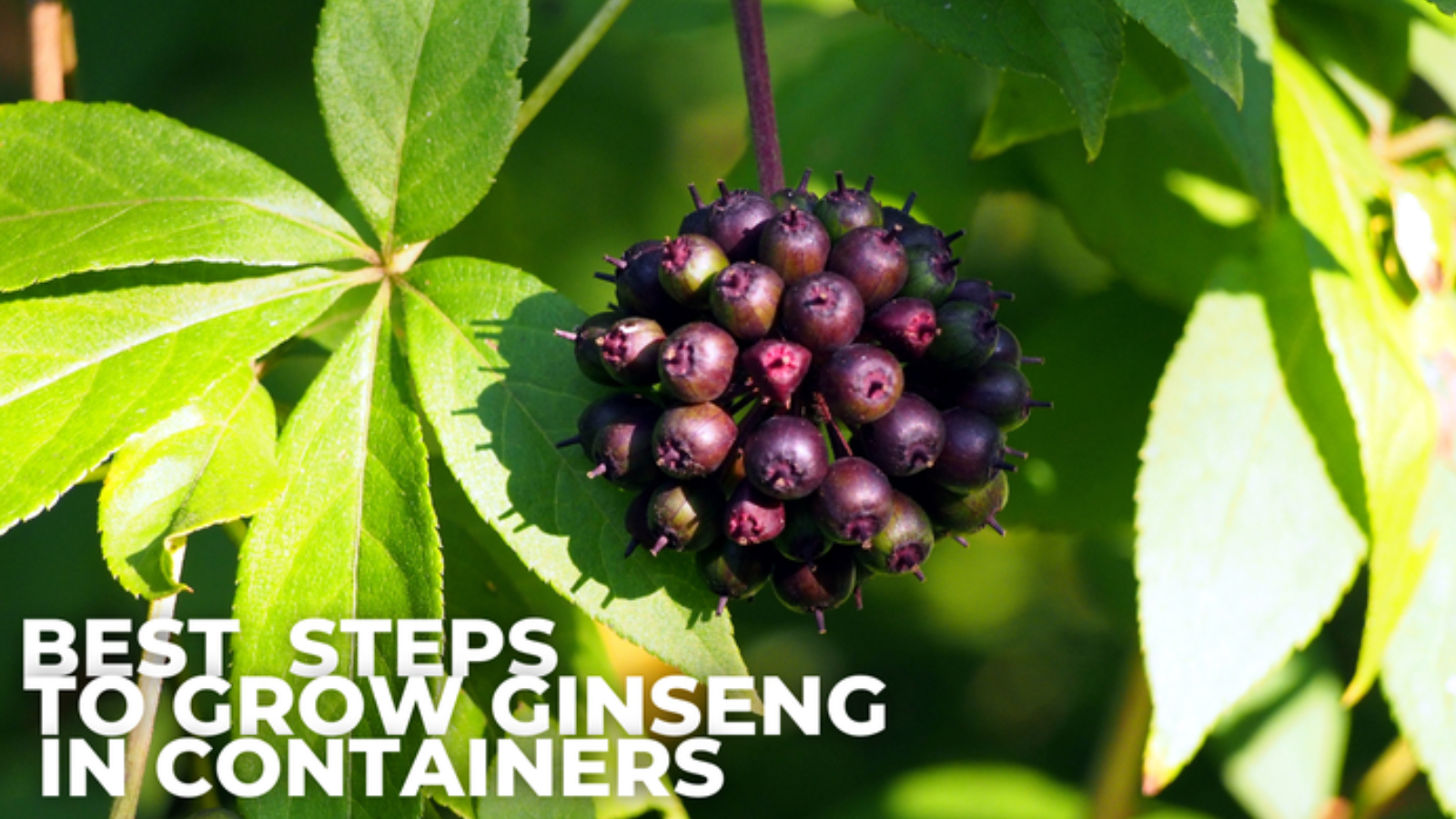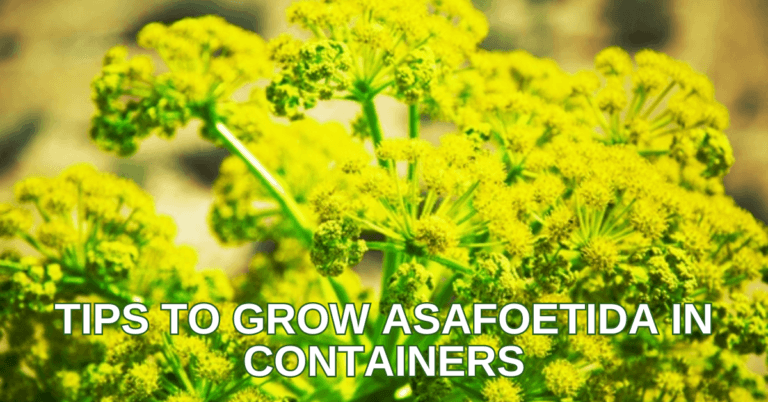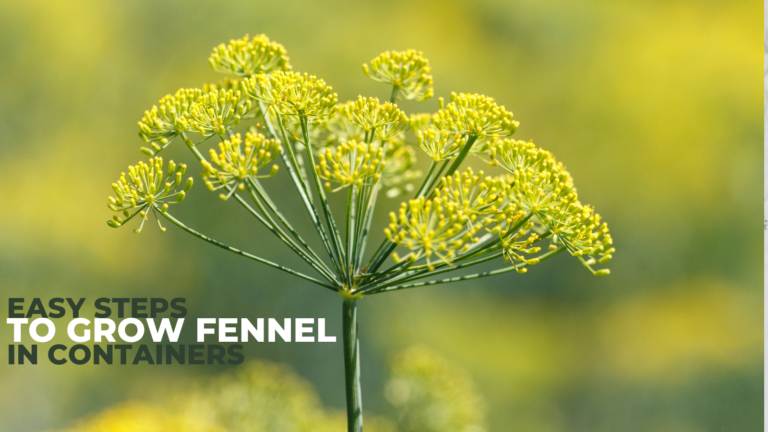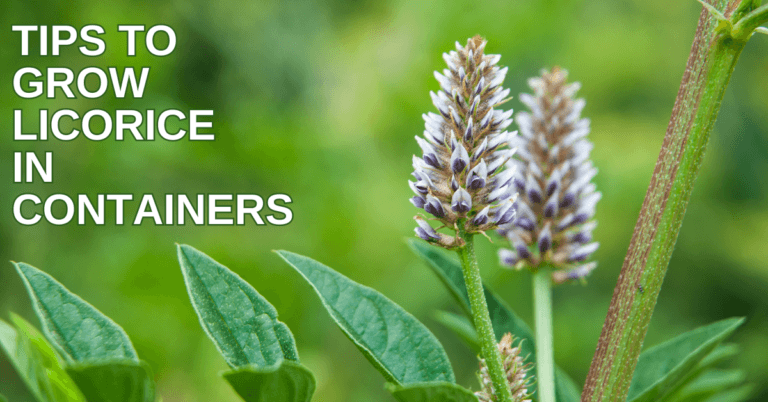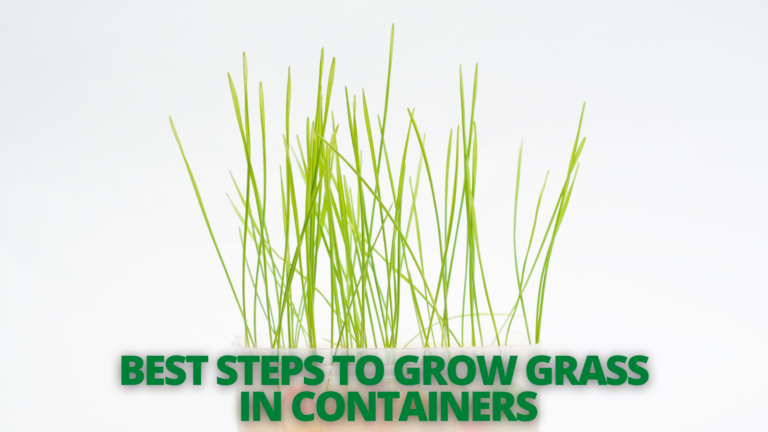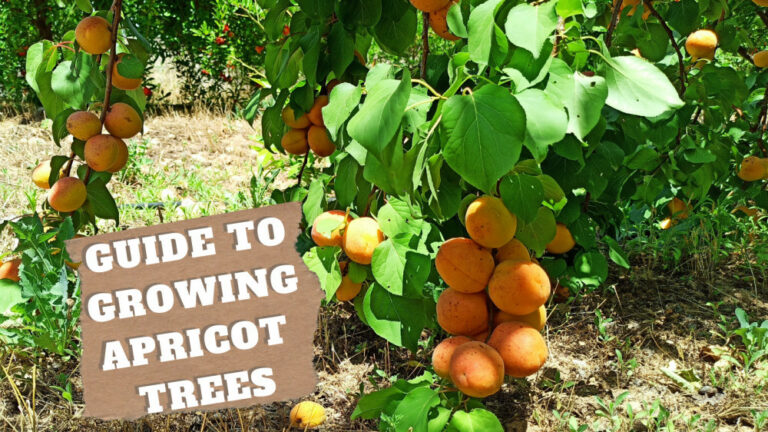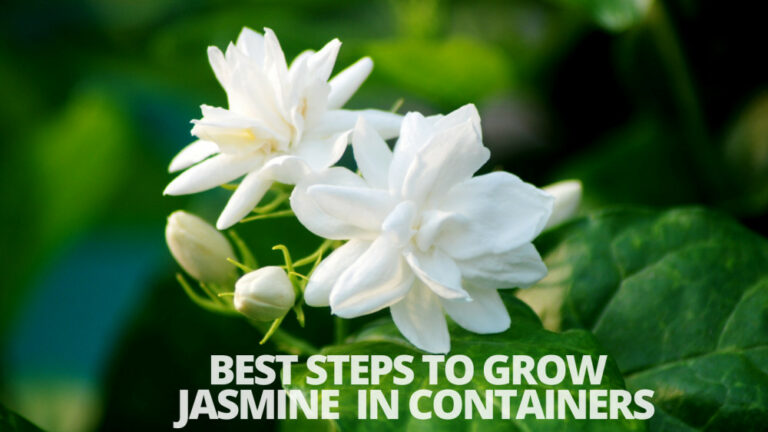Best Steps To Grow Ginseng In Containers
Best Steps To Grow Ginseng In Containers
In Asia, ginseng (Panax spp.) has been utilized for thousands of years. It is a perennial herbaceous plant that is frequently grown for therapeutic purposes.
Ginseng cultivation demands perseverance and meticulous upkeep. It grows best outside, either in beds or containers.
Continue reading if you have any inquiries or want to know how to grow ginseng in containers. You'll learn about potted ginseng and get advice on how to make container-grown ginseng flourish.
History & Origin Of Ginseng
In the past, ginseng was the most respected herb in China, Korea, Japan, and America. Over 5000 years ago, ginseng was found in the mountains of Manchuria, China. More than two thousand years of writings contain mentions of ginseng.
Chinese people revere it because they view it as a cure-all plant that may be used for various ailments (currently, its Latin name is derived from the Greek panacea, meaning, that is, for everything). Therefore, it was only used by the Chinese Emperors, who had no trouble paying the price.
As ginseng's notoriety grew, it sparked a burgeoning global trade that enabled Korea to provide China with silk and medications in exchange for wild ginseng, and later with ginseng that grew in America.
Markets for a plant called American ginseng (Panax quinquefolius) were created in the 1700s, and the race was on.
Harvesting the enormous quantities of roots that were discovered growing wild was quite profitable. Daniel Boone, a famous historical figure, derived much of his wealth through ginseng exploitation.
Since its discovery 200 years ago, ginseng has been so widely collected that its continued availability may be in jeopardy in several areas.
It now benefits from the protection provided by the Convention on International Trade in Endangered Species (CITES).
Before any legal harvesting is done, each state that permits wild harvesting must have an authorized management plan.
This does not apply to roots that have been grown, which require a cultivation certification. There are schemes for legally certified harvesting in many eastern and midwestern states. The state of Pennsylvania is one of them.
Contact your local Department of Conservation of Natural Resources to learn about any changes to regulations and how they affect cultivated ginseng before planting any ginseng and once more before harvest.
Ginseng is a relatively expensive item due to its scarcity. Dried roots frequently sell for $500 or more each point based on quality and age.
Pennsylvania has a long history of agriculture, with writings on cultivation techniques dating back to 1902.
This website can find some current details about Pennsylvania's ginseng industry.
Ginseng cultivation is a tried-and-true traditional crop in Pennsylvania. A lot of “wild” roots are still found on former plantations.
Types Of Ginseng
If you are persuaded and would like to try ginseng, continue reading as we describe the several varieties that can be consumed and their particular advantages:
1. Korean Ginseng
This kind, often known as Asian or Red Ginseng, is highly esteemed and sought after worldwide.
It is regarded as the original ginseng and has the finest therapeutic qualities. It is an excellent metabolic regulator that wakes up bodily cells.
2. American Ginseng
Instead of referring to the growing region, American ginseng refers to its species.
In contrast to the warming energy found in the Asian form, American ginseng is supposed to have a cooling effect.
It is supposed to improve cellular health and effectively battle lethargy and exhaustion.
3. Siberian Ginseng
Despite not being natural ginseng, this variation does offer some therapeutic benefits.
It is the weakest of all the ginseng varieties available and is typically advised for individuals managing metabolic disorders.
4. Brazilian Ginseng
Brazilian ginseng is a dried root of a South American plant that was developed primarily to capitalize on the success of ginseng as a nutritional supplement.
It is also used as an aphrodisiac to combat weariness since it offers the body an energy boost.
5. White Ginseng
This American-native ginseng has been air-dried and peeled (but not heated). The ginseng root turns a yellowish-white colour when exposed to the sun.
According to some studies, air-drying ginseng reduces its effectiveness since the root's enzymes break down vital plant parts as they dry.
6. Red Ginseng
Red ginseng has been peeled, boiled in a steam bath at 100°C, dried, or sun-dried. The root is frequently marinated in a herbal brew, which makes it highly fragile. This kind is more prevalent than white ginseng.
Health Benefits Of Ginseng
Ginseng helps to fight off colds and the flu: Ginseng may boost your immune system, assisting your body in warding off illnesses like the flu or the common cold.
According to a qualified dietician and private practice nutritionist Keri Gans, MS, “Ginseng root extract has been demonstrated to have a substantial antiviral activity.”
However, most current research studies have been conducted in laboratories using human cells or animals.
A 2020 human trial found that taking two ginseng extract capsules daily reduced the risk of getting the flu or the common cold by over 50% compared to taking a placebo.
The same study also discovered that ginseng extract reduced illness from an average of 13 days to six days if you are already ill.
1. Boosts Energy Levels
Ginseng contains substances known as ginsenosides, which function in three ways to counteract weariness and maintain energy levels.
- Keeping your central nervous system in check prevents overexcitation and energy depletion.
- Combating bodily inflammation that may aggravate fatigue.
- Balancing your cortisol levels is a stress hormone that can impact how much energy you have.
- According to the authors, ginseng is effective at treating fatigue, according to a 2018 evaluation of 10 studies, but additional study is still needed.
2. Treats Erectile Dysfunction
Recent studies suggest that ginseng may be a successful treatment for erectile dysfunction (ED), according to Gans.
To generate an erection, ginseng can assist in increasing sexual excitement and relaxing the smooth muscles in the penis.
Taking ginseng pills can dramatically lessen the symptoms of erectile dysfunction.
Ginseng berries, another component of the plant, may also assist in treating ED. According to a 2013 study, patients with erectile dysfunction who took 1,400 mg of ginseng berry extract daily for eight weeks had considerably better sexual function than those who took a placebo.
3. Control Blood Sugar
According to Gans, evidence from recent studies suggests that ginsenoside components in ginseng can aid in restoring normal blood sugar levels.
According to Gellman, “ginseng may help enhance glucose metabolism, which helps blood sugar control” and may aid in treating type 2 diabetes.
Ginseng also aids in reducing inflammation since inflammation can increase your risk of getting diabetes or exacerbate its symptoms.
Ginseng supplements can aid blood sugar management and insulin sensitivity, two crucial aspects of treating diabetes, according to a 2019 assessment of eight studies.
How To Grow Ginseng In Containers
In this country, ginseng supplements and tea are both readily available. You can grow your ginseng in planters or pots if you don't mind the wait.
Before starting to produce potted ginseng, you should know it will need time and patience. The plant's roots take four to ten years to mature, regardless of whether you grow your ginseng in a container or a garden bed.
Time To Plant
It will require a lot of patience to grow ginseng at home, whether in the ground or pots, primarily because the plant shouldn't be picked until it is three years old.
Ginseng seeds should be purchased in the fall or early winter. These stratified seeds have already shed their outer coat, hastening the germination process significantly.
Selecting A Planting Site
Ginseng grows more contentedly in nature than in cultivation; thus, if you want to cultivate it properly, you must understand how to emulate its natural surroundings.
If feasible, choose a quiet, shaded location, ideally close to the forest's edge. Rich, well-draining, organic matter-rich soil with an acidic pH level is ideal.
The soil in your growing region should be rich, well-draining, and between pH 6.0 and 6.5. Select a place with little traffic and some shade (or that you can provide artificial colouring).
Take out any large pebbles or anything that can hinder the growth of your ginseng. Additionally, ginseng can be grown in eight-inch plastic pots.
Choose Seeds
Getting stratified seeds from a nearby producer is the fastest and least time-consuming approach for novice ginseng farmers to get started.
This indicates that the hard exterior of your seeds has been lost. Although these seeds cost a little more than un-stratified seeds, they germinate far more quickly.
Choose The Right Container
Pick a container with drainage holes about 15 inches (40 cm) in diameter. Use fertile loam potting soil that drains nicely.
The seeds should be sown 4 centimetres (1½ inches) deep. Grow in the shade with only a sliver of sunshine, keeping the soil moist.
Ginseng can also be effectively grown inside drainage-equipped containers positioned away from direct sunlight.
While roots should be buried beneath three inches of soil and best planted in the early spring, seeds should be sown in the fall at about 1½ inches.
Soil To Grow Ginseng In Containers
Ginseng thrives in soil rich in organic matter and calcium and is moist and well-drained (the trees mentioned above release calcium into the soil).
Sites that are flat or have a history of floods are unacceptable because the location shouldn't be too wet.
Pick a location with abundant leaf litter to plant ginseng since it makes fantastic natural mulch and nutrition. Ginseng cannot grow in clay or heavily compacted soil.
Grow Ginseng From Seeds
You can store seeds until you're ready to sow them. To avoid fungus infestations, soak them in a 10% bleach solution for 10 minutes before planting.
Set separate seeds by 1½ inches when they begin to sprout in the early to mid-spring, thin them to a distance of 3 inches.
Grow Ginseng From Seedlings
When seedlings from a commercial grower arrive, they should be planted immediately. Seedlings should be spaced 3 inches apart, then watered.
Water To Grow Ginseng In Containers
Besides preferring shaded locations, ginseng enjoys damp soil, so its surroundings provide suitable moisture.
It's crucial to pick an area for your planting that closely resembles where ginseng grows naturally.
It can improve drainage and moisture retention by incorporating peat moss and leaf litter compost. Except in drought-like situations, ginseng usually doesn't need extra watering.
Temperature & Humidity
Ginseng should not be grown in climate zones more significantly than 7, as it dislikes hot temperatures. In woodland environments, the humidity is generally constant.
Thus, ginseng shouldn't be planted in areas that are constantly damp and susceptible to flooding or standing water during the rainy season.
Ginseng Propagation
Ginseng can be multiplied by seeds, cuttings, or division. Act to promote ginseng in the fall or spring.
If you choose to purchase seeds, ensure the supplier is reputable; if not, gather the seeds when the plant expels them in the fall. But keep in mind that unstratified seeds have trouble germinating.
We advise purchasing stratified ginseng seeds and planting them in the fall, anytime before the ground freezes.
Make seed beds by adding the proper substrate. 1 to 2 inches should be left between each seed.
The seeds should be pressed about half an inch deep. For protection during the winter, mulch them with a thick layer of leaves and straws (approximately 2 inches).
The following spring or summer will see the emergence of seedlings.
Overwintering
Although ginseng can endure temperatures as low as -40 F (-40 C), it cannot tolerate excessive dampness or rain while it is dormant in the winter.
It is, therefore, advisable to cover the plant with a heavy layer of mulch to overwinter it. Two inches of mulch are needed in warm climates, whereas three to four inches are needed in northern, cooler regions.
Summer Care
Once planted, the ideal summer temperature for growing Panax ginseng is between 62°F and 70°F (17°C and 21°C). Summer temperatures must not surpass 77°F (25°C), and humidity levels must be low.
Fertilizer
Fertilizer shouldn't be required for ginseng plants if you choose a location with good, rich soil; it could overburden them and impair their ability to develop healthily.
The best nutrients for ginseng are leaf mould, decomposed compost, or decomposing forest leaves.
Pests & Disease Of Ginseng
Ginseng growing is not recommended for the weak-willed. There are various problems you'll run into.
To ensure a decent harvest, you can utilize some preventative measures and maintenance work, but occasionally, trial and error are required. You may suffer from root rot, leaf blight, and damping-off illnesses with your ginseng.
To prevent the spread of illness, provide ginseng plants with the best circumstances and keep them apart.
If your plants show symptoms of illness, you can treat them with a fungicide because most issues are fungal.
Pests can also be a big problem. Slugs frequently eat ginseng leaves, and an infestation can cause plants to die. Slugs can be dried by mulching with sawdust.
You must apply pesticides to eliminate cutworms since they might consume foliage. Other insects may pose issues, although they are rarely serious.
The roots have been known to be eaten by mice, but deer have completely devastated ginseng plantings.
Ginseng plants can contract an infection from weeds and even immature trees. Weed the growing area before planting and keep doing so until the ginseng is entirely developed, as the first year of growth is when the competition has the biggest impact on ginseng.
Harvesting And Storing Of Ginseng
Even commercially produced ginseng may only be harvested from mature plants (at least three years old) in the late summer and early fall.
Therefore, if you're thinking of growing ginseng, remember you'll need patience before your plants are ready to harvest and market.
Since ginseng outlives people, there is no need to rush a harvest. Use a shovel to carefully dig up your crop beginning no earlier than the fourth year of the plant to avoid damaging the roots.
Rinse your ginseng gently to remove dirt, then dry it in a cool, dry area with plenty of airflow.
Turning the roots daily will hasten the drying process and prevent mould, which can take more extensive roots several weeks to complete.
Dried ginseng should be kept in a wicker basket or other ventilated container. Your mature roots can be sold online to clients or to wholesalers.
Harvesting and selling seeds or seedlings will help you supplement your income. Follow an ancient American custom and make yourself a pot of ginseng tea twice daily with the items you cannot sell.
Conclusion
Ginseng is a diminutive, resilient forb. Ginseng takes about 8 years to reach maturity. Much of Virginia is home to ginseng. Please feel free to comment below if you need any help growing ginseng in containers.
I trust you enjoyed this article on the Best Steps To Grow Ginseng In Containers. Please stay tuned for more blog posts to come shortly. Take care!
JeannetteZ
>>>Please click here to read my all-inclusive article about Container Gardening<<<
>>>Are you interested in homegrown herbs and medicine? Please click here to find out more about it!<<<
Your Opinion Is Important To Me
Thoughts? Ideas? Questions? I would love to hear from you. Please leave me your questions, experience, and remarks about this article on the Best Steps To Grow Ginseng In Containers in the comments section below. You can also reach me by email at Jeannette@Close-To-Nature.org.
Disclosure
This post may contain affiliate links. As an Amazon Associate and other affiliate programs, I earn from qualifying purchases at no extra cost to you. Read my full affiliate disclosure.
You might also enjoy these blog posts:
Easy Steps To Grow Celery In Containers
Easy Steps To Grow Goldenseal In Containers
Easy Steps To Grow Feverfew In Containers
Easy Steps To Grow Ginkgo In Containers
15 Best Essential Oils For Natural Healing

